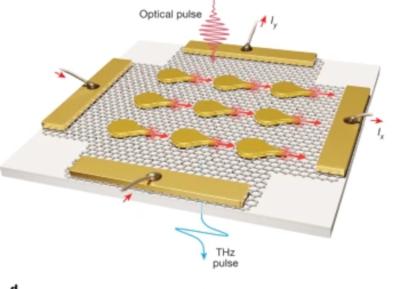Researchers develop a scalable method to reduce the contact resistance of graphene
The exceptional electronic properties of graphene make it a material with large potential for low-power, high-frequency electronics. However, the performance of a graphene-based device depends not only on the properties of the graphene itself, but also on the quality of its metal contacts. The lack of effective and manufacturable approaches to establish good ohmic contacts to a graphene sheet is one of the factors that currently limit the full application potential of graphene technology. The quality of the graphene-metal contacts is described in terms of the contact resistance (RC). Low RC values are crucial for any high-frequency or low-power application. Graphene’s low density of states near the charge neutrality point (Dirac point) limits carrier injection from metals, often resulting in high RC values.
(a–d) Schematics showing the process sequence for manufacturing the devices and the laser irradiation of graphene in the contact regions. (e) Optical micrograph of one of the measured devices. Image credit: AMO
Recently, researchers from RWTH Aachen University and AMO have developed a scalable method based on laser irradiation of graphene to reduce the RC in nickel-contacted devices. A laser with a wavelength of l = 532 nm is used to induce defects at the contact regions, which are monitored in situ using micro-Raman spectroscopy.




